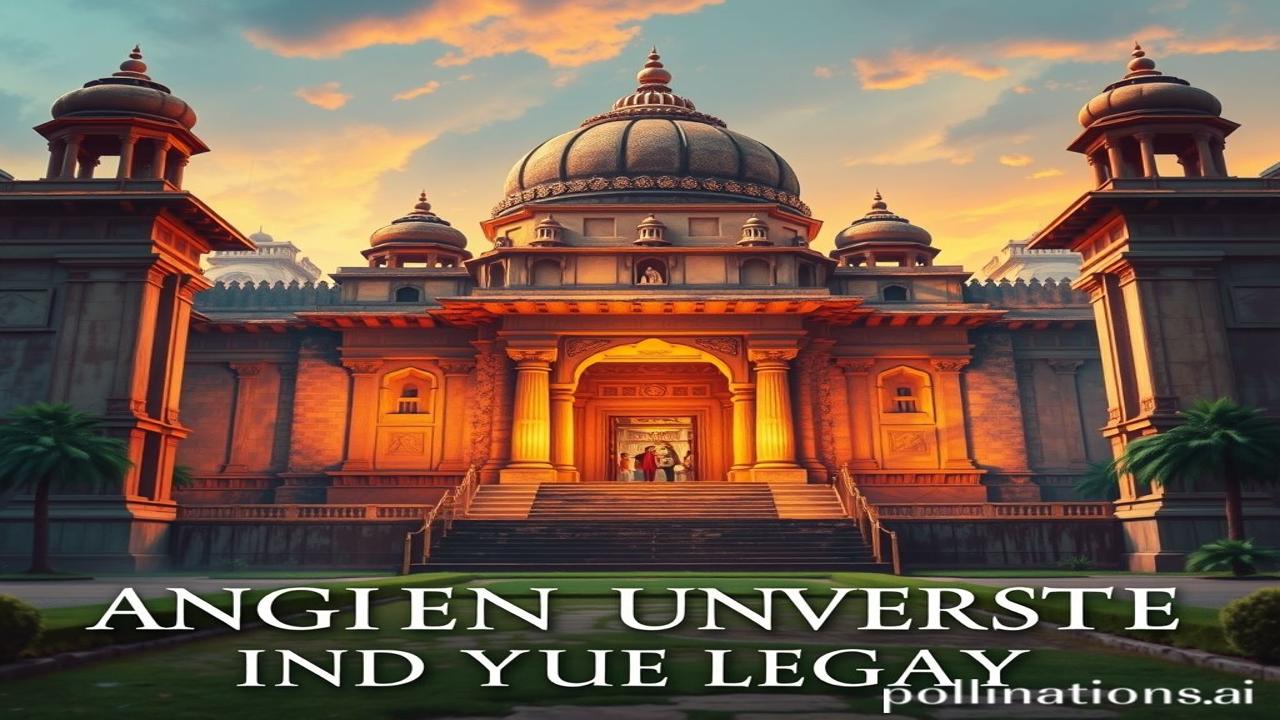Waqt Ke Panno Mein Khoi Gyan Ganga: Ancient Indian Universities & Their Legacy
Kabhi socha hai, aaj hum jo internet aur AI ki baat karte hain, uske roots kitne purane hain? Humne toh ‘gurukul’ movies mein dekha hoga, lekin kya kabhi ancient Indian universities ke baare mein suna hai, jo duniya bhar se students ko attract karti thi? Imagine, ek aisi jagah jahan knowledge ka samandar hilor maar raha hai, aur har taraf se log us mein dubki lagane aa rahe hain. These weren’t just schools; they were melting pots of ideas, innovation hubs of their time. Let’s dive deep into the forgotten stories of these ‘vidya ke mandir’!
Itihas Ki Jhankar: Understanding Ancient Indian Universities
Ancient Indian universities weren’t just places to learn; they were the epicenters of intellectual and cultural exchange. Think of Nalanda, Takshashila (Taxila), Vikramshila, Vallabhi, Odantapuri – these weren’t just names; they were brands of knowledge.
- What are we talking about? These were institutions of higher learning that flourished in ancient India, attracting students from all over Asia and even parts of Europe.
- When and where did they thrive? From around the 6th century BCE to the 12th century CE, these universities flourished across the Indian subcontinent. Takshashila was located in present-day Pakistan, while Nalanda, Vikramshila, and Odantapuri were in modern-day Bihar, India. Vallabhi was in Gujarat.
- Why were they important? They weren’t just centres for religious studies (though Buddhism and Hinduism were major streams), but also for science, medicine, astronomy, grammar, philosophy, and even warfare. They were the breeding grounds for some of the greatest thinkers, scientists, and artists of their time. Imagine the impact of these places on shaping the future of Asia! These places embodied ‘ज्ञान’ and ‘विवेक’.
Zameeni Sach: Life at Nalanda – A Glimpse
Imagine a young Chinese scholar, Xuanzang (Hiuen Tsang), traveling thousands of miles on foot, braving deserts and mountains, just to reach Nalanda. He’s not alone. Students from Korea, Tibet, Indonesia – all seeking the light of knowledge.
Let’s picture a typical day at Nalanda:
- Early Morning: The sound of chanting fills the air as monks and students begin their day with prayers and meditation.
- The Lecture Halls: Hundreds of students gather in massive lecture halls, listening intently to renowned scholars. Debates are fierce, ideas clash, and new philosophies are born.
- The Library: Imagine a library so vast it spanned multiple buildings – Dharmaganja at Nalanda. Here, students poured over ancient texts, transcribed manuscripts, and debated complex theories. The air smelled of old paper and ink, the faint scent of incense lingering from morning prayers.
- Beyond Academics: Students weren’t just bookworms. They practiced martial arts, engaged in philosophical discussions under the starry sky, and even organized cultural festivals. The life of a student at Nalanda was a holistic experience, designed to nurture not just intellect, but also character and spirit. Maano, yeh ‘तपस्या’ aur ‘साधना’ ka sangam tha.
Dharohar Aur Pehchan: Echoes in Today’s India
Even though these universities are now ruins, their legacy lives on.
- Education System: The emphasis on holistic education, critical thinking, and debate continues to inspire modern Indian education.
- Architectural Influences: The architectural style of these universities can be seen in many temples and monasteries across India.
- Values: The values of ‘ज्ञान’, ‘सत्य’, and ‘अहिंसा’ that were promoted in these institutions are still central to Indian culture.
- Bharatiyata: These universities are a reminder of India’s rich intellectual heritage and its contribution to global knowledge. They are a testament to the spirit of inquiry and the pursuit of excellence that defines Bharatiyata. We strive to regain that same ‘शक्ति’ in modern India.
Mazedaar Tathya Ya Bhram-Bhanjak: Taxila, Not Just a Myth!
Log samajhte hain ki Takshashila sirf ek kahani hai, lekin asli sach yeh hai ki it was a bustling center of learning centuries before Nalanda. While popular imagination often portrays Nalanda as the oldest, Takshashila was actually established much earlier – possibly as early as the 6th century BCE! It specialised in subjects like law, medicine, and military science, and was renowned for its exceptional teachers. So, the next time someone talks about ancient Indian universities, remember to give Takshashila its due!
Drishya Aur Bhavnayein: A Sensory Journey
Close your eyes for a moment. Imagine walking through the corridors of Nalanda. The air is thick with the scent of incense and sandalwood. The sound of chanting echoes through the halls. The sun shines through the ornate windows, casting patterns on the stone floors. You can feel the cool smoothness of the ancient stones beneath your feet. You hear the murmur of voices, the rustling of leaves in the courtyard, and the distant sound of drums. This is more than just a place of learning; it’s a place of enlightenment, a place where the mind and spirit are nurtured.
Antim Vichar Ya Udharan:
“ज्ञानं परमं ध्येयम्” – Knowledge is the ultimate goal.
These ancient universities remind us of the importance of lifelong learning, intellectual curiosity, and the pursuit of truth. They are a testament to the enduring power of education to transform individuals and societies. May we continue to strive for the same heights of knowledge and wisdom that our ancestors achieved. These places were not just built of bricks and mortar but of dreams, aspirations, and the unwavering pursuit of ‘सत्य’. And their legacy continues to inspire us today.
